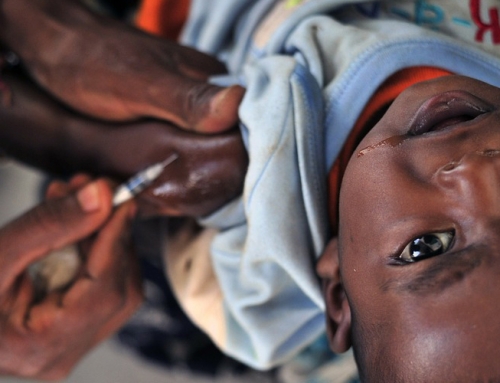Coronavirus (COVID-19) is reaching epidemic levels across the world, with thousands of cases in the United States, China, Italy and Iran. The numbers are increasing in new countries while china reports that the virus is ebbing within its shores. There are early reports that vaccine candidates are making progress through the approval process. However, it is unlikely that a vaccine will be ready for at least a year. While we do not yet know how this disease will spread over the coming months and years, it is timely to look back at efforts to eliminate other viruses to understand what makes an immunization campaign effective. There are potential take-away from those efforts that can inform efforts to address coronavirus pandemic.
A recent article published in the International Journal of Translation Medial Research and Public Health studied polio eradication efforts in Nigeria and India. Polio is an infectious disease caused by a virus, which can cause permanent disability in those who are infected. An original polio vaccine was developed in the 1950s. While the vaccine has led to a dramatic reduction in the rates of polio over the following decades, public health officials have not been able to entirely eradicate the disease, as was the case with smallpox. Currently, there are still a handful of cases reported world-wide, concentrated in impoverished countries with limited health infrastructure.
The article focuses on comparing the eradication of Polio in India and Nigeria. Nigeria has not had any cases of wild polio since 2017, while India was declared polio-free in 2012. These two countries are useful contrasts, as India is viewed as a success story, while Nigeria experienced more challenges. The authors of the review screened over 3,000 research papers to find the articles that most directly addressed the eradication of polio in Nigeria and India. From the papers that remained, the reviewers distilled the most important themes in an attempt to address why India fared better than Nigeria.
One of the clearest findings is the importance of vaccine choice. There are several versions of the polio vaccine, though some have been found to be less effective than others. Particularly, the vaccine used in Nigeria was shown to be less effective, particularly in communities that are struggling with malnutrition or poor sanitation. In comparison, India began using a more effective vaccine earlier, leading to better rates of immunization. Nigeria eventually switched to a more effective version of the vaccine, but this lag represents lost time and resources.
While technical challenges did present a barrier for Nigeria, non-technical issues like poor health infrastructure also played a role in a less effective polio eradication effort. The government did not have the ability to plan and implement this program, leading to misused resources or shortages of vaccines. This led to public health workers having poor motivation and poor training, meaning that implementation of the anti-polio campaign was less effective.
India, on the other hand, developed a multi-layered campaign that included international aid organizations, government agencies, and local officials. Ultimately, they we are able to staff teams that would make multiple visits to communities to maximize rates of immunization.
This lack of proper institutional capacity in Nigeria was amplified by public attitude about vaccinations. The populace was suspicious of vaccines as a result of false rumors claiming that vaccines cause infertility. This is related to a general mistrust of government institutions, which is common in Nigeria according to the review. By contrast, India effectively mobilized community and religious leaders to become invested in the anti-polio campaign. This type of community buy-in is essential in countries that are ethnically and religiously mixed. While intangible factors such as “trust in government” may be difficult to address, they make a real difference in fighting disease.
Coronavirus and polio are very different diseases, but there are lessons that can be learned from the experience of public health officials in Nigeria and India combatting polio. While cutting-edge medicine is an essential component of an eradication campaign, it is tempting to view vaccines as the end of the story. Interestingly, this research shows that qualities such as institutional capacity and public perceptions play vital roles in implementing an immunization program. The article serves as an important reminder that work must be done now to prepare public health agencies and educate the public so that the when eventually a Coronavirus vaccine becomes available, that it is as effective as possible once it is ready for distribution.
You can read more about the new study here.
For more information on these and other health topics, take a look at what we are doing at the Health, Environmental Education and Awareness (HEEA) program. HEEA day is an opportunity to educate members of our community on the relationship between the environment and public health. Experts share nuggets of life-saving health and environment information in a joyful and entertaining atmosphere.
Human health is truly complex. But there is hope. Obtaining and empowering ourselves with the latest information and research on different health conditions is important for protecting your health. Health care providers, researchers and other experts from around the world publish curated and reviewed information on health issues affecting mothers, women, children and families and other health issues at the International Journal of Translational Medical Research and Public Health. On this journal’s website, you can also read updated and interesting articles on public health, medical research, and how research is changing our lives all online and at no cost to you.
*Jesse Harris, MSc, MASc (Chemistry & Chemical Engineering), a scientist, educator, and leader based in Espanola, Ontario, Canada, volunteers for the Global Health and Education Projects, Inc., Washington, DC, USA, working in collaboration with Dr. Romuladus E. Azuine






